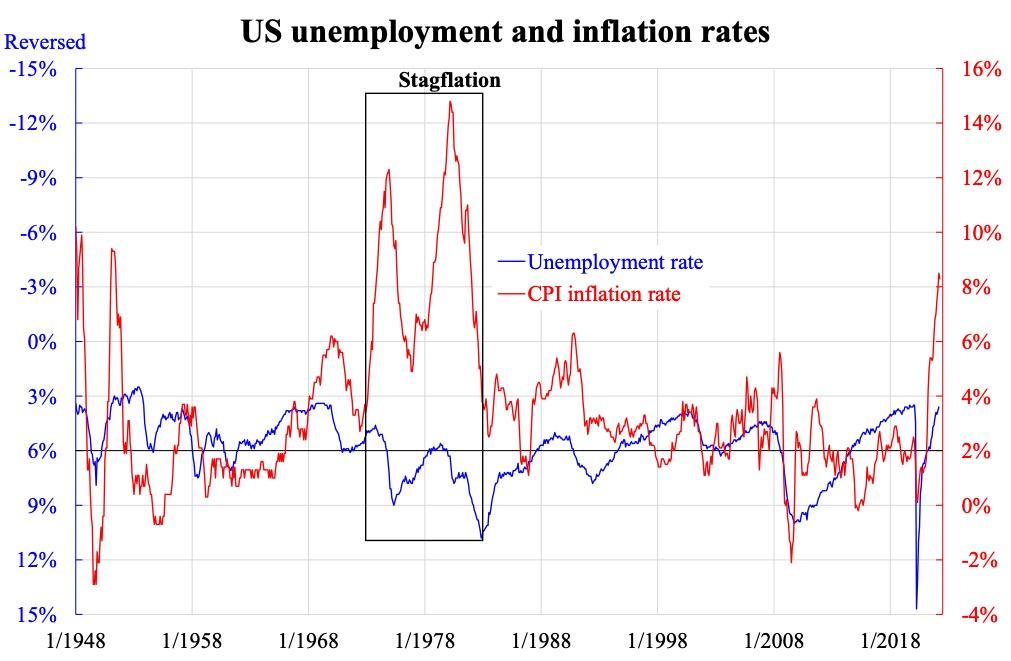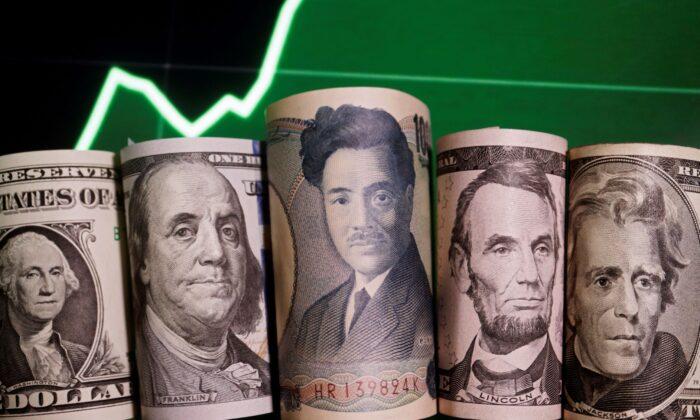The worry of stagflation is spreading widely, as more disappointing economic data is released since the start of the rate hike. Regardless of the warning by authoritative scholars, the real side of the western world is still very strong. Inflation is certainly high, but stagnation is not yet seen. In the current context, to claim stagflation ahead of it appearing is equivalent to claiming stagnation has started. But unlike recession, which has a strict definition of two consecutive quarters of contraction, there is no commonly agreed definition of stagnation, not even about which variable to use.
Stagnation is a vague term that did not come from classical (old) theories. Before the 1970s, when population aging was not an issue, high growth was normal and “stagnant” growth was very rare. For terms invented in recent decades, they tend to be event driven. Often, stagflation is referred to as the situation seen in the U.S. in the 1970s, and stagnation is as seen in Japan in the 1990s; and one needs to “feel” the meaning of the terms from these events. There is no clear-cut definition of what stagnant means: If it means zero trend growth of real GDP like in Japan in the 1990s, then the U.S. in the 1970s would certainly not be the case.
If we want stagflation to mean more location-wise than period-wise, then it will make more sense to use unemployment rate than real GDP growth as a measurement. This is because real GDP growth rates among countries tend to commove, and if a trend growth is referred to, then it could take decades to see a meaningful trend. For unemployment rate however, different countries do have more distinctive trends even if they are subject to the same shock. GDP growth is better at measuring cycle while unemployment better at telling secular trend.

Examination of the U.S. unemployment and Consumer Price Index (CPI) inflation rates in the accompanying chart, with the former on an inverted axis, stagflation is easily seen from both unemployment and inflation being high, as is shown boxed in the period of the 1970s. Had GDP growth been used, a long-term downtrend would have been seen due to aging, thus failing to highlight the stagflation era. Unemployment is also more meaningful to the general public given most people would care more about jobs. Who really cares how high the GDP growth number is? Ask a layman for the recent number, most of them cannot answer!
Stagflation is theoretically an outcome of the supply curve being shifted leftward. That says, a negative supply shock leads to lower quantity (stag-) but higher price (-flation). Look at the chart again. The recent shock is obviously more demand-like than supply, where inflation rate increase is accompanied with unemployment rate decrease. Supply chain lockdown due to Covid-19 should be there, but thanks to ridiculous monetary easing, demand boosted to an extent that negative supply shock looks negligible.
To curb this high inflation, the correct way is to hike ridiculously to generate a negative enough demand shock. This means recession. Only when the hike is too weak where inflation is not curbed but recession is going to happen, then there will be stagflation.





